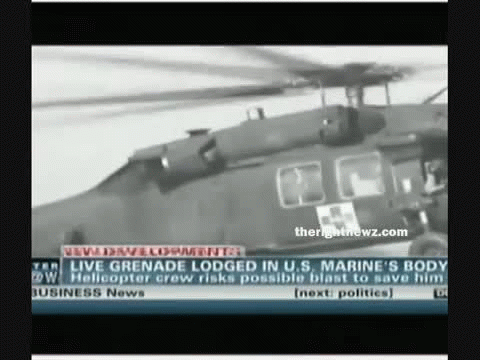Copy the embed code below and paste it to your site or blog.
Category:
Description:
Graphic view with caution!
Need for the AR-15 in Law Enforcement!
The .223 caliber AR-15 carbine is becoming increasingly popular with law enforcement agencies for patrol. There are numerous companies manufacturing the AR-15 model carbines, with Colt being the dominant system among the military and law enforcement community (www.colt.com). Other manufacturers are: Armalite, Bushmaster, DPMS, Eagle Arms, Knight’s Mfg. Co., Olympic Arms and Rock River Arms. Regardless of the manufacturer, all AR-15 model carbines operate the same, but may vary in style depending on the chosen model and options.
The .223 caliber AR-15 patrol carbine should be semi-automatic (and not select-fire) and have a barrel length between 14.5 inches and 16 inches. These barrel lengths give the .223 caliber cartridge the minimum velocity necessary to obtain the highly effective terminal wounding ballistics created by the .223 Rem caliber bullet.
The right-hand barrel twist for the AR-15 carbines is usually a 1-in-7, 1-in-9, 1-in-10 or 1-in-12 twist rate. This equals one complete rotation of the bullet for every 7, 9, 10 or 12 inches in the barrel. Faster barrel twists (lower numeric rate) are used to stabilize heavier and longer bullets, while lighter and shorter bullets require slower barrel twists. The 1-in-9 twist rate has become popular with law enforcement because it does not understabilize the heavier bullets or excessively overstabilize the lighter ones. Most law enforcement AR-15 carbines are manufactured with a 1-in-9-inch barrel twist that produces superior accuracy with a variety of bullet weights up to 69 grains.
Stocks
Since most AR-15 carbines will be department owned, they must be adjustable to comfortably fit every officer. A 4 or 6 position telescoping butt stock assembly will allow all the officers to individually adjust the weapon’s stock length regardless of their size or gender. This will assist the operator in obtaining the proper cheek and nose weld technique when shouldering the carbine. A collapsible stock will also make the weapon shorter and easier to secure in the patrol vehicle.
Night Sights
With 70% of law enforcement shootings occurring during low-or no-light conditions, it is necessary to equip the AR-15 police carbine with “night sights.” This will enable officers to acquire a sight picture under these diminished conditions. Among others, Trijicon manufactures night sights for the AR-15 with tritium inserts built into the square blade front sight and one on each side of the large rear sight aperture. When installing night sights, it is highly recommended to replace both the front sight post and rear sight aperture.
Flashlight Systems
It is vital to have a flashlight system attached to the carbine to be prepared for low-and no-light conditions. Among others, SureFire manufactures numerous configurations of tactical lighting systems for the AR-15 carbine. Flashlight systems mount to the carbine in different ways: 1) attached to the barrel, 2) attached to the front sight assembly, and 3) attached to or built into the front hand guard.
Attaching the flashlight to the underside of the weapons front sight assembly will keep the mounting hardware and weight of the flashlight off the barrel. The light unit will not interfere with the barrel whip when the weapon is fired, and accuracy should not be affected. This also keeps the light unit out of the peripheral view of the shooter and orientates the light beam in line with the barrel.
The majority of these light systems are activated by a pressure-sensitive activation pad switch that intermittently turns the light on or off, without the possibility of having it get stuck in the on position. These activation pads can become unfastened or torn off the weapon during use because the standard mastic on the Velcro® strips wears down over time. Permanently gluing the strips to the pad and forehand stock will usually this.
Grinding down some of the ribs on the forehand stock will create a flat and recessed surface to mount the activation pad switch. Modular units have the flashlight and switches built into the horizontal or vertical forehand grip, which allows the operator to momentarily activate or lock on the light beam using the built-in constant on/off rocker switch.
When evaluating light systems, try to get the most powerful light available in the smallest and lightest package. The length and size of the light depends on your power needs, battery length and size of the bezel lamp assembly. Since most carbines will be secured in the weapon rack of the patrol vehicle, lithium batteries are used because they retain their charge longer than others when not being used. The light system should be checked daily for function and the batteries replaced as needed or annually at a minimum.
The light should also be equipped with a “red lens” beam filter to reduce the intensity and glare of the bright white light. This is used when searching, to prevent telegraphing your movement or exposing your tactical position. When more light is needed, the lens cap can be flipped open to expose the bright white light. Tactical lights are used for threat identification, searching or shooting, and to visually disable and control a suspect by temporarily blinding him with the intense light.
Optics
The patrol rifle should be a rugged weapon that is very simple to operate, and this also pertains to the sight system. Standard iron sights are built into the front sight assembly and carry handle, with protective wings and rails on each side. This protects them from being damaged if knocked or dropped during deployment, helping to maintain the weapons zero.
Optical aiming devices can be attached to the patrol carbine in a variety of configurations, especially if equipped with a removable carry handle, flat-top M1913 Picatinny rail system. If this type of carbine system is dropped or seriously knocked against something, the optical aiming device could become loose or damaged, and no longer be zeroed.
High-quality optical aiming devices can make some tasks easier to perform. Optical aiming sights such as the SPA Simrad, EOTech, C-More and Aimpoint Sights allow the shooter to acquire a quick sight picture and keep both eyes open during close-quarters shooting. Scopes with fixed or variable magnification help to identify, range and pinpoint where to aim on a distant target. However, these devices do not increase a shooter’s accuracy when compared to standard iron sights. The basic fundamentals of marksmanship still apply and are necessary to accurately engage a target.
Optical aiming devices can become quite costly for a department, with some costing as much as the carbine. If chosen, these devices require special attention to maintain their reliability. The mounting screws have to be properly tightened, threads secured with “blue” Locktite, and locking points marked with a dot of fluorescent enamel paint. This will prevent the device from becoming loose and allow the officer to visually check the paint marks to see if it is becoming unsecure or has been tampered with. If the device is loose or the paint seal is broken, the weapon must be taken out of service, properly remounted, and the zero tested.
Reloading Devices
It is very important to have a second magazine available for the police patrol carbine. Since these weapons will be used by patrol personnel, it is unlikely an officer will be carrying an extra magazine. Attaching an extra magazine to the weapon will ensure it is available and not left behind.
If a second magazine is not available when a serious malfunction occurs, the officer will be forced to clear the obstruction and reload with the same defective magazine, or transition to the sidearm. Additionally, tactical and speed reloading will not be an option for the officer.
There are several reloading devices that can accomplish this. The dual-magazine clamp models attach a spare magazine to the one seated in the magazine well. These devices can become loose, causing the spare to shift or slip downward. The additional weight can also cause the primary magazine to improperly seat, creating a failure to feed malfunction.
The butt-stock magazine pouch models attach to the stock to carry an extra magazine. The problem of obtaining the proper stock weld will occur when an officer switches shoulders to fire, and the magazine is not in an optimal position for a quick tactical or speed reload.
The most secure method to carry an extra magazine is with the Redi-Mag RM-15 A-1 Reloading Device. This ruggedly constructed metal device firmly attaches to the lower receiver and carries an extra magazine separate of the one in the magazine well. The spare magazine is securely held in the device, with the magazine feed lips and ammunition protected from being damaged or fouled with debris.
When the magazine release button is pressed, both magazines simultaneously drop from the weapon for an extremely fast tactical or speed reload, or when switching ammunition types for specific tactical situations. With the A-1 Model, the bolt release button can be easily activated to lock back and release the bolt without making any modifications to the carbine.
Magazines
Magazines for the weapon should be high-quality factory magazines constructed out of aluminum. After-market magazines made of plastic or steel are not as reliable and should be avoided. Most AR-15 law enforcement carbines come standard with two aluminum body 20-round magazines from the factory.
The standard practice is to load the magazines with two rounds less than full capacity, with 18 loaded in a 20-round magazine. This is done so the magazine springs are not under full tension and will function more reliably. This should help in reducing failure to feed and bolt-over malfunctions.
The 20-round magazines are inherently more reliable than the 30-round magazines and are sufficient for patrol use, especially if an extra magazine is available. The 20-round magazine is shorter in length (allowing you to get lower to the ground in the prone position), will not get caught up on objects as easily, and fits better in the patrol car.
Slings
A carry sling is necessary to make sure the muzzle of the weapon remains pointed down at the ground when it is not being used, to carry the weight of the weapon for hands-free operation, and to maintain weapon retention. Traditional military and hunting type slings offer no tactical benefits and should never be used.
Many companies market the adjustable three-point, two-point and bungee cord design tactical slings that secure the carbine to the officer’s body. It is recommended to connect tactical slings to the top of the carbine at the back of the front sight assembly and top rear of the telescoping butt stock. This prevents the weapon from twisting and keeps the muzzle orientated downward to maintain safe muzzle control.
Locking Racks
A carbine securely stored in the patrol vehicle will ensure the weapon is ready for deployment. It should be readily accessible to the officer, secured inside the vehicle and within arm’s reach for rapid deployment. The patrol carbine should never be mounted or stored in the trunk because it will be exposed to harsh climatic conditions and become damaged.
One of the leaders in the electronic locking weapon rack industry is Big Sky Racks Inc. They make several models for the AR-15 carbines (the ELS-220, ELS-270, ELS-271 and ELS-300). The safest and most discrete location to mount the rack is above and behind the driver, attached to the roll bar of the cage frame. The muzzle of the weapon is oriented toward the driver’s side door for easy removal and rapid deployment. The electronic locking system is activated by a concealed switch and also has a keyed override lock if there is an electrical failure in the vehicle.
When equipping the carbine with an optical aiming sight or scope, you may be limited to the type of electronic locking weapon rack system for the patrol car. Most of the rack models that accommodate an optical aiming device may not allow a reloading device to be attached. This company will send test and evaluation rack systems to inquiring departments. This is very important to see how the weapon and accessories will fit in the rack and patrol vehicle. If necessary, customized racks can be made upon request to fit any carbine configuration.
To prepare officers for any high-risk incident, the police patrol carbine must be equipped with the necessary tactical devices. This will ensure a professional response and increase personal safety by giving officers an advantage over the majority of armed offenders. It is vital to test every device for proper fit, function and reliability.
Most of all, it must fulfill the operational and tactical needs of your police department. If a department fails to properly equip the AR-15 patrol carbine, they will not be using the full benefits this weapon system has to offer.
 ENGLISH
ENGLISH SPANISH
SPANISH FRENCH
FRENCH ITALIAN
ITALIAN HINDI
HINDI CHINESE
CHINESE JAPANESE
JAPANESE ARABIC
ARABIC PORTUGESE
PORTUGESE GERMAN
GERMAN RUSSIAN
RUSSIAN



 Subscribe
Subscribe









